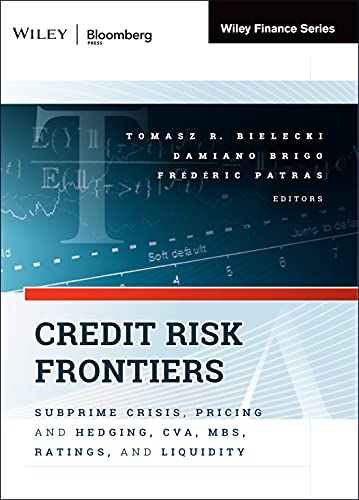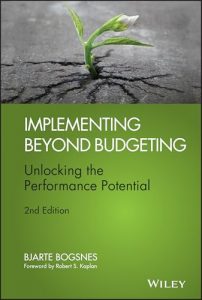1. Credit Risk Frontiers: Subprime Crisis, Pricing and Hedging, CVA, MBS, Ratings, and Liquidity
Written by experts Tomasz Bielecki, Damiano Brigo, and Frederic Patras, this book dives deep into the complexities of credit risk. It provides a meticulous analysis of the subprime crisis, unfolding the intricate connections between pricing, hedging methods, and liquidity issues that arose during the financial tumult. Investing in this book grants readers invaluable insights, making it an essential read for anyone interested in financial stability and risk management methodologies. The authors eloquently explain theoretical concepts enriched by real-world applications.

2. Confidence Game: How Hedge Fund Manager Bill Ackman Called Wall Street’s Bluff
Christine S. Richard offers a riveting exploration into the strategy behind hedge fund manager Bill Ackman’s infamous bet against a major corporation. This book dissects the psychological and financial maneuvers that led to an unprecedented profit, shedding light on the layers of confidence, risk, and market manipulation. It serves as a blueprint for understanding the hedge fund industry and will empower readers to think critically about investment risks and corporate strategies.

3. 101 Things Everyone Should Know About Economics: From Securities and Derivatives to Interest Rates and Hedge Funds
Peter Sander’s book stands as an accessible introduction to essential economic concepts. Perfect for beginners, it breaks down complex topics into digestible pieces, explaining everything from derivatives to hedge funds. This guide not only lays the foundation for your understanding of economics but also enlightens readers on how these concepts affect daily life. It’s the perfect tool to demystify the financial jargon that pervades the markets today.

4. Credit Risk: Pricing, Measurement, and Management (Princeton Series in Finance)
Authored by Darrell Duffie and Kenneth J. Singleton, this book is a comprehensive guide to comprehending credit risk. With its analytical approach, it addresses essential questions regarding pricing and measurement in risk management. This text serves as a cornerstone for financial professionals and scholars alike, providing both theoretical and practical insights into the ways credit risk can be effectively managed, making it a must-have reference.

5. Modelling, Pricing, and Hedging Counterparty Credit Exposure: A Technical Guide
This technical guide provides readers with an advanced approach to counterparty credit exposures, emphasizing the importance of modelling, pricing, and hedging. Authored by a team of experts including Giovanni Cesari and Zlatko Filipovic, it is ideal for those in the finance sector needing insights into mitigating risks associated with counterparty debt. This book impresses with its scholarly approach while offering practical strategies that professionals can apply directly to their work.

6. Quantitative Management of Bond Portfolios
In this insightful text by Lev Dynkin and his colleagues, the intricacies of managing bond portfolios are explored through a quantitative lens. Highlighting modern theories and practical applications, this book is crucial for both students and finance professionals looking to refine their portfolio management techniques. With relevant examples and thorough explanations, readers are armed with actionable strategies to enhance their investment outcomes.

7. Hedge Fund Industry: Developments and Practices
This book, published by the International Monetary Fund, provides a comprehensive overview of the hedge fund industry, including its developments and emerging practices. This essential reading sheds light on how hedge funds operate in the global financial landscape, allowing readers to gauge their influence on the economy and investment markets. A must-read for investors and analysts alike who want to stay informed about the latest trends and practices in this field.

8. Dark Markets: Asset Pricing and Information Transmission in Over-the-Counter Markets
Darrell Duffie’s “Dark Markets” provides a unique glimpse into the often-overlooked world of over-the-counter markets. The book adeptly analyzes asset pricing and the critical role that information transmission plays in these markets. By understanding the mechanisms and implications of dark markets, readers can appreciate their contemporary significance in finance, making this book essential for anyone involved in or studying finance.

9. Risks in Financial Instruments Trading
This accessible guide covers a wide array of financial instruments, from cryptocurrencies to futures contracts, providing insights into associated risks. Authored by a diverse group including David Stuart and Scott Pearls, it appeals to both new and experienced traders. The book emphasizes sound risk management practices and helps readers develop a clearer understanding of how to navigate the volatile landscape of financial trading safely.

10. Global Finance in Crisis
Finally, “Global Finance in Crisis” addresses critical global financial issues, discussing how crises impact economies worldwide. Featuring contributions from Eric Helleiner, Stefano Pagliari, and Hubert Zimmermann, this book explores the interconnectedness of global finance and provides readers with a comprehensive overview of crises and responses. An essential read for economists, policymakers, and anyone looking to understand the landscape of global finance.





































